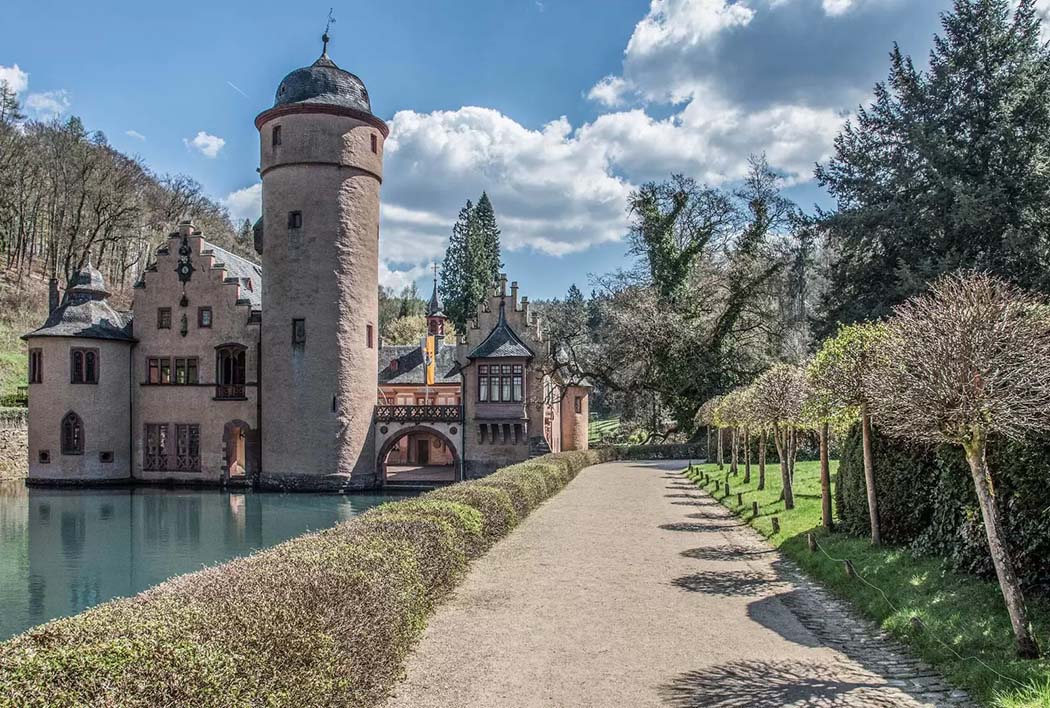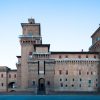Mespelbrunn Castle
Mespelbrunn Castle, nestled in the scenic Spessart forest of Bavaria, Germany, captivates visitors with its fairy-tale beauty and late medieval architecture. Known for its unique location on a tranquil lake, this enchanting castle boasts a serene ambiance and a well-preserved structure. It has become one of the most beloved and picturesque castles in Europe.
Location of Mespelbrunn Castle
You will find Mespelbrunn Castle in the small municipality of Mespelbrunn, between Frankfurt and Würzburg in the German state of Bavaria. Within the Spessart Nature Park, this castle benefits from its secluded location, away from major urban centers. This unique setting on a serene lake, with parts of the structure partially submerged in the water, enhances its picturesque appeal.
The Spessart region, home to Mespelbrunn Castle, lies within easy reach of nearby cities. Located roughly 70 kilometers west of Frankfurt, the castle also sits just 20 kilometers from the historic town of Aschaffenburg. As a result, many city dwellers visit Mespelbrunn to escape urban life and enjoy a slice of Bavaria’s natural beauty and architectural heritage. Surrounded by lush forests and serene landscapes, Mespelbrunn Castle provides a genuine retreat into history.

History of Mespelbrunn Castle
The early 15th century saw the beginnings of Mespelbrunn Castle when Hamann Echter, a knight in the service of the Archbishop of Mainz, received the land as a grant. Frequent raids and violence plagued the region at that time, so Hamann Echter established a fortified residence. His son, Peter Echter, began transforming the simple manor into the water castle we see today. This transformation took place over several generations of the Echter family.
By the early 16th century, the family had rebuilt the castle into a Renaissance-style structure, adding the distinctive round tower and residential quarters. During this period, the Echter family rose to prominence, with Julius Echter becoming Prince-Bishop of Würzburg. Under his influence, the castle’s architecture and cultural significance developed further, symbolizing the family’s status and wealth.
Throughout its long history, Mespelbrunn Castle avoided destruction during periods of conflict. Unlike many other European castles, Mespelbrunn remained undamaged during the Thirty Years’ War because of its remote location. In the 17th and 18th centuries, the Echter family line eventually ended, and the castle passed to the Ingelheim family through marriage. Today, the Counts of Ingelheim still own Mespelbrunn Castle and have preserved its historical integrity for future generations.

Current status
Today, visitors find a well-preserved example of Renaissance architecture at Mespelbrunn Castle. The Counts of Ingelheim continue to own it privately, yet they have opened certain parts to the public. These sections include rooms adorned with period furniture, tapestries, and portraits that tell the story of the castle’s storied past.
The meticulously maintained castle grounds allow visitors to stroll around the moat. They can admire the reflection of the castle on the lake’s still waters. Though modest compared to other European castles, the gardens contribute to the peaceful setting, which encourages leisurely walks. Seasonal events, like summer fairs and medieval reenactments, also attract guests, bringing the castle’s history to life.
Efforts by the current owners have ensured that Mespelbrunn Castle retains its historical character. The castle’s fairy-tale appearance—enhanced by its reflection on the water—makes it a popular site for photography. This unique structure blends harmoniously with the natural landscape. This harmony has earned Mespelbrunn Castle a reputation as one of Germany’s most beautiful water castles.
If you plan to visit Mespelbrunn Castle, it opens to the public from April to October, with specific tour times varying by season. Checking the official website for up-to-date information on hours and ticket prices is recommended. Due to its relatively remote location, the castle is most easily reached by car, although you can find public transportation options from nearby towns. Multiple-language guided tours provide insights into the castle’s history, architecture, and the families who have lived there.
Admission
Community features
Castle features
Video
Location
Official website
Follow Mespelbrunn Castle
Featured listings














